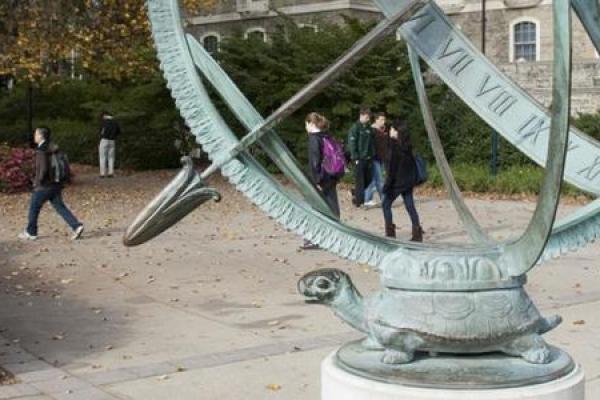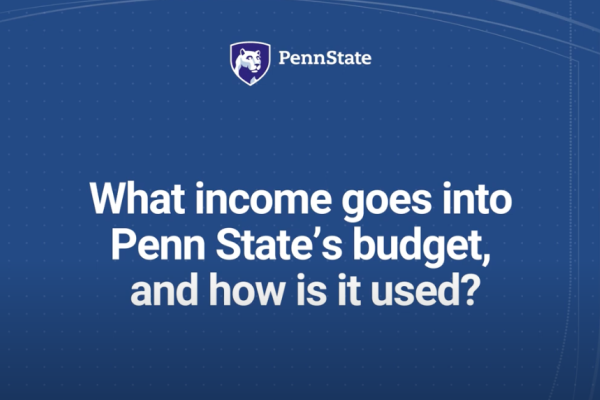Penn State community members are invited to ask questions and share thoughts and feedback about how to improve the budget model.
Budget Allocation Approach
Penn State's data-driven budget allocation model is part of our modern budgeting approach to uphold the University's commitment to student success, research, and the land-grant mission across the commonwealth.
The Budget Model
The data-driven budget model creates a clearer picture of the University’s overall revenue and costs and helps to better inform spending priorities and investments to support Penn State’s mission and values. The University is committed to aligning resources with the needs of our students by using data and metrics to inform annual allocations. By budgeting ahead two fiscal years (meaning we are planning for 2026-27 fiscal year in 2025), our students, their families, and our unit leaders are able to plan for the future.
To help keep Penn State on track with its financial goals and to protect institutional finances, monthly financial reports are distributed to budget executives, financial officers, the president, and the Board of Trustees.
Annual Budget Model Timeline
- November-December: The budget model is rerun with current data for two fiscal years in the future
- December: Budget executives receive their unit’s central allocation for the future fiscal year and have an opportunity to review the model and share feedback
- January: Allocations are shared with the University community
- April-May: Budget executives and financial officers use the central allocation they receive to create their fiscal year budget
- April-May: Budget executives and financial officers meet with the senior vice president for Finance and Business, provost, and/or senior vice president and chief of staff to get approval for their fiscal year budget
- May-June: The Budget and Finance Office prepares the University budget
- July: The Board of Trustees is asked to approve the operating budget and tuition schedules

Penn State’s Institutional Values
Upholding and strengthening Penn State's core mission, vision and values are the foundation of the process to build a new budget model.

Principles
The working group identified key principles to guide the budget model decision-making process.

Frequently Asked Questions
Here you will find answers to the common questions about the budget allocation initiative.

Asked and Answered
A video series featuring members of the Working Group addressing questions about the budget plan.
Additional Information
VIDEOS
- Faculty & Staff Budget Town Hall (September 2022)
- Students & Family Budget Town Hall (September 2022)
- Budget Allocation Town Hall (December 2022)
- Asked and Answered Video Series (2023)
- Budget Model Explainer Videos (2024)
ARTICLES
- Penn State unifies financial organization, begins new budget transformation (July 2022)
- Penn State leaders discuss budget and tuition at student and family town hall (September 2022)
- Top frequently asked questions at employee town hall (September 2022)
- Penn State working group continuing efforts to redesign budget allocation model (November 2022)
- Penn State leaders provide overview of budget allocation model at town hall (December 2022)
- University budget effort continues as units start work on individual budgets (January 2023)
- Penn State leaders share updates on key University efforts, initiatives (June 2023)
- Penn State leaders share road map for University's future (January 2024)
- Q&A on the budget allocation model: Penn State’s road map for the future (February 2024)
- Vice President DelliCarpini provides Commonwealth Campus update (March 2024)
- Community conversation focuses on the future of the Commonwealth Campuses (April 2024)
- Providing additional insight into Penn State’s 2025-26 budget (May 2024)
- University leadership shares budget model insight with Faculty Senate (May 2024)
- Educational videos on budget model, associated workbooks now available (May 2024)
- Penn State on strong financial path as revamped budget model enters third year (January 2025)

